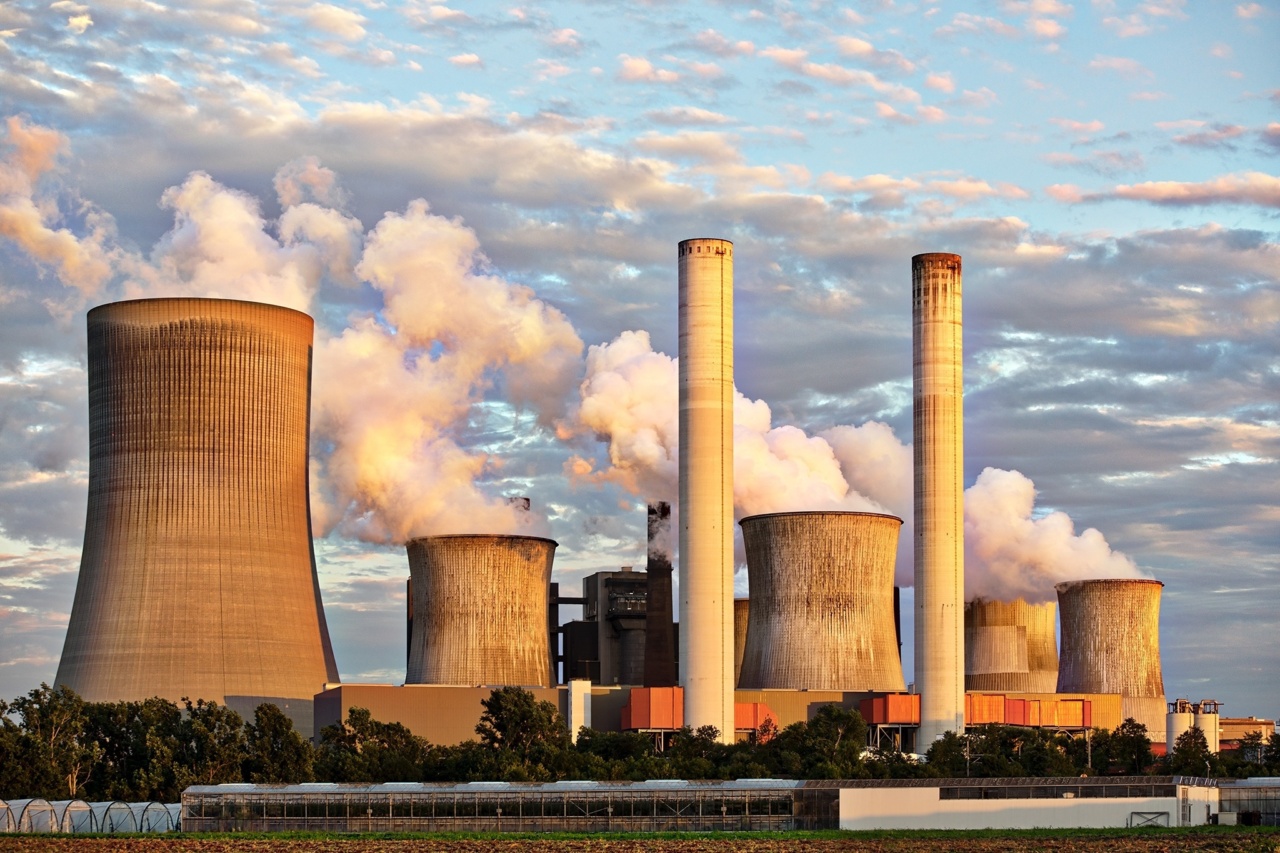Air pollution is a serious global issue that affects the quality of the air we breathe. It occurs when harmful substances, known as pollutants, are released into the atmosphere.
These pollutants can have detrimental effects on human health, ecosystems, and the environment as a whole. In order to address this problem effectively, it is essential to understand the major sources of air pollution and work towards reducing or eliminating them. This article aims to explore the various sources of air pollution and highlight their impact.
Industrial Emissions
Industrial activities such as manufacturing processes, mining, and power generation are significant contributors to air pollution.
These activities release various pollutants into the air, including carbon dioxide (CO2), sulfur dioxide (SO2), nitrogen oxides (NOx), particulate matter (PM), and volatile organic compounds (VOCs). The burning of fossil fuels, such as coal, oil, and natural gas, in industrial processes is a major source of these emissions. In addition, the discharge of untreated or inadequately treated industrial waste gases can also contribute to air pollution.
Vehicle Emissions
The burning of fossil fuels in vehicles, including cars, trucks, and motorcycles, is a significant source of air pollution.
The combustion of gasoline and diesel fuels in engines releases pollutants such as carbon monoxide (CO), nitrogen oxides (NOx), particulate matter (PM), and volatile organic compounds (VOCs). Vehicle emissions contribute to the formation of smog, which is a mixture of air pollutants that can have adverse health effects.
Power Plants
Power plants that generate electricity by burning fossil fuels also release substantial amounts of air pollutants. These plants emit pollutants such as sulfur dioxide (SO2), nitrogen oxides (NOx), carbon dioxide (CO2), and particulate matter (PM).
The combustion of coal is particularly problematic, as it releases large quantities of pollutants into the air. Efforts are being made to transition to cleaner and more sustainable energy sources, such as solar and wind power, to reduce the impact of power plant emissions.
Residential Emissions
Residential activities contribute to air pollution in various ways. One significant source is the burning of solid fuels, such as wood, coal, and biomass, for cooking, heating, and lighting purposes.
These practices release pollutants such as carbon monoxide (CO), particulate matter (PM), and volatile organic compounds (VOCs) into the air. Poor ventilation and outdated technologies further exacerbate the problem. In addition, residential emissions from the use of pesticides, cleaning chemicals, and personal care products can contribute to indoor air pollution.
Agricultural Activities
Agricultural practices, including livestock farming, crop production, and the use of fertilizers and pesticides, contribute to air pollution.
Livestock farming releases large amounts of methane (CH4), a potent greenhouse gas, as well as ammonia (NH3) and hydrogen sulfide (H2S) from animal waste. Crop production often involves the use of chemical fertilizers and pesticides, which can release nitrogen oxides (NOx) and other harmful substances into the atmosphere. Agricultural burning, especially in certain regions, also adds to air pollution.
Natural Sources
While human activities are major contributors to air pollution, natural sources also play a role.
Volcanic eruptions release large amounts of sulfur dioxide (SO2) and ash into the atmosphere, which can have significant regional and global impacts on air quality. Dust and pollen from natural sources, such as deserts and vegetation, can also contribute to air pollution. Additionally, forest fires emit smoke and ash, releasing particulate matter (PM) and other pollutants into the air.
Industrial and Residential Waste
Improper disposal and management of industrial and residential waste can lead to air pollution. When waste materials, including plastics, rubber, and organic waste, are burned, toxic fumes are released into the atmosphere.
Incinerating waste increases the emission of pollutants such as carbon monoxide (CO), nitrogen oxides (NOx), and particulate matter (PM), posing serious health risks to nearby communities. Effective waste management strategies, including recycling and proper disposal methods, are essential to minimize air pollution from waste.
Construction Activities
Construction activities, including demolition, excavation, and building operation, can contribute to air pollution. Dust and particulate matter (PM) generated from these activities can pose health risks if not properly controlled.
Construction equipment and machinery, such as generators and bulldozers, also emit pollutants into the air. Implementing dust control measures, using low-emission construction equipment, and promoting sustainable construction practices can help mitigate air pollution from construction activities.
Industrial and Residential Combustion
The combustion of fuels for heating, cooking, and other energy needs in both industrial and residential settings contributes to air pollution.
Burning of coal, oil, wood, and other solid fuels releases pollutants such as sulfur dioxide (SO2), nitrogen oxides (NOx), carbon monoxide (CO), and particulate matter (PM) into the air. The use of inefficient stoves, outdated technologies, and poor ventilation further exacerbates the problem.
Transitioning to cleaner and more sustainable energy sources, such as natural gas and renewable energy, is crucial to reduce pollution from combustion.
Industrial Chemical and Refinery Processes
Chemical manufacturing and refinery processes involve the use and release of various toxic substances, contributing to air pollution.
Industries that produce chemicals, plastics, pharmaceuticals, and petrochemicals emit a range of pollutants, including volatile organic compounds (VOCs), ammonia (NH3), and chlorine (Cl2), among others. Industrial accidents or leaks can release hazardous chemicals into the atmosphere, posing immediate risks to the surrounding environment and human health.
Effective monitoring, control, and accident prevention measures are vital to minimize air pollution from these industries.
Conclusion
The major sources of air pollution include industrial emissions, vehicle emissions, power plants, residential emissions, agricultural activities, natural sources, industrial and residential waste, construction activities, combustion processes, and industrial chemical and refinery processes. These sources release pollutants such as carbon dioxide (CO2), sulfur dioxide (SO2), nitrogen oxides (NOx), particulate matter (PM), volatile organic compounds (VOCs), and more.
The impact of air pollution on human health and the environment is significant, leading to respiratory problems, cardiovascular diseases, climate change, and ecological disruptions. It is crucial to implement effective pollution control measures, promote sustainable practices, and transition to cleaner energy sources to mitigate the adverse effects of air pollution.




























